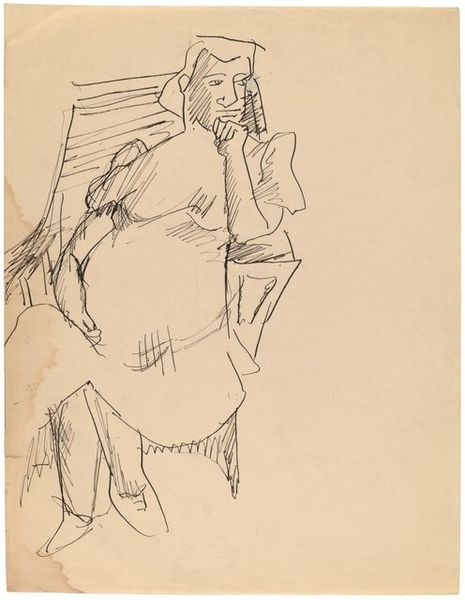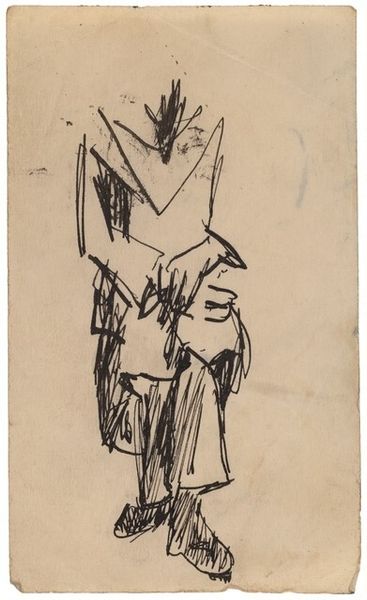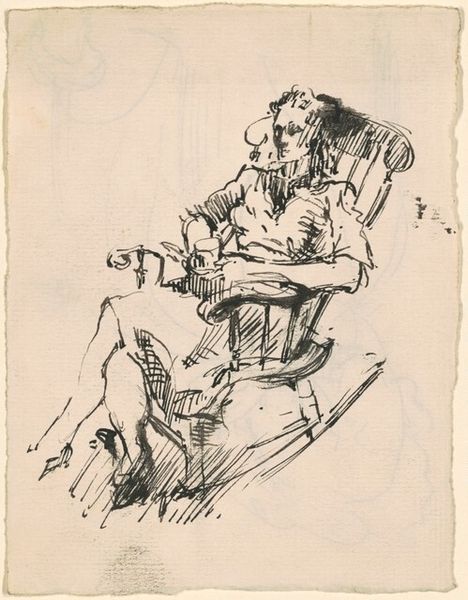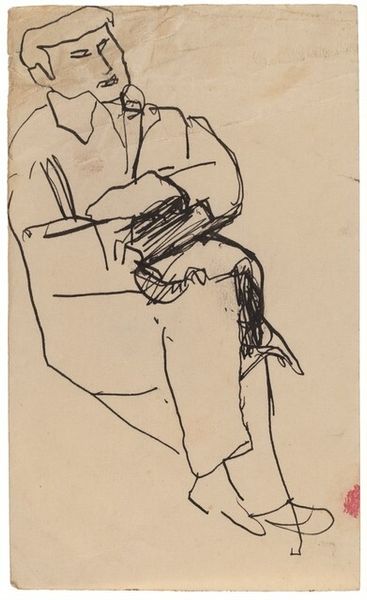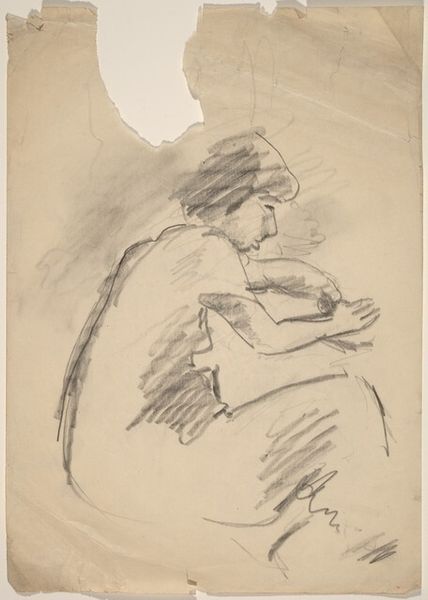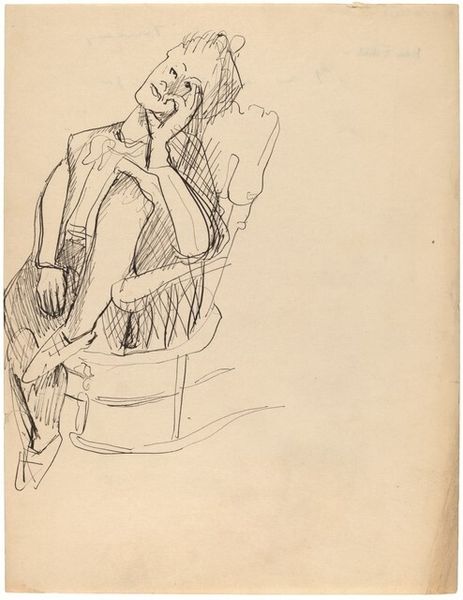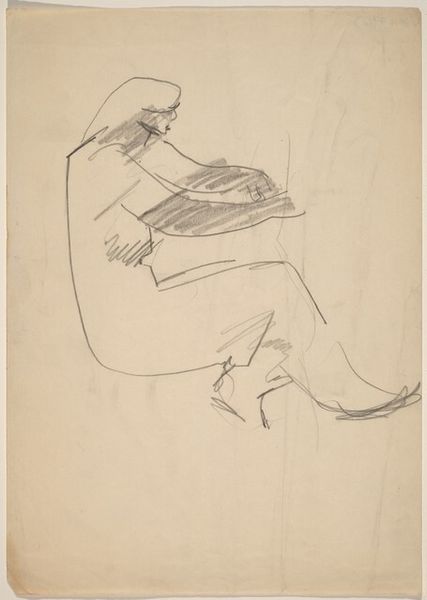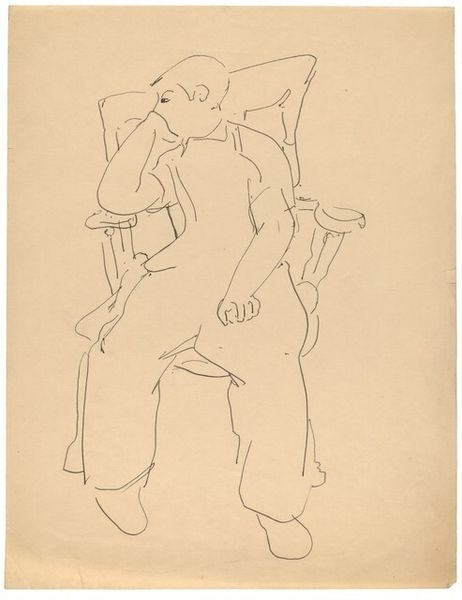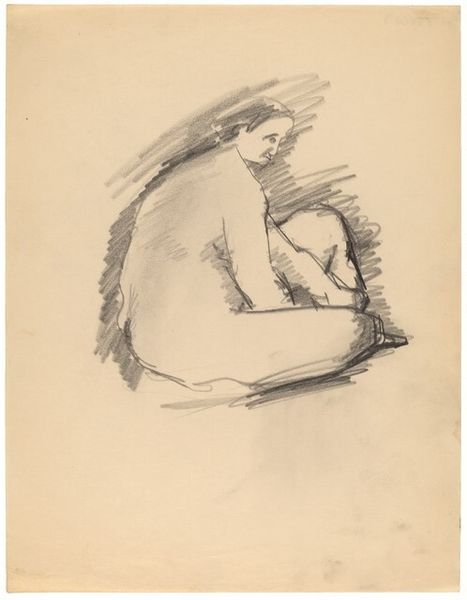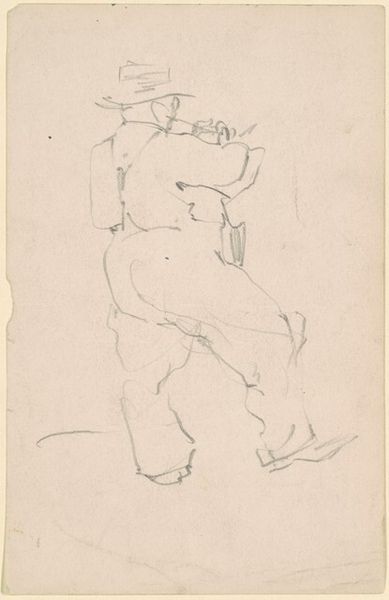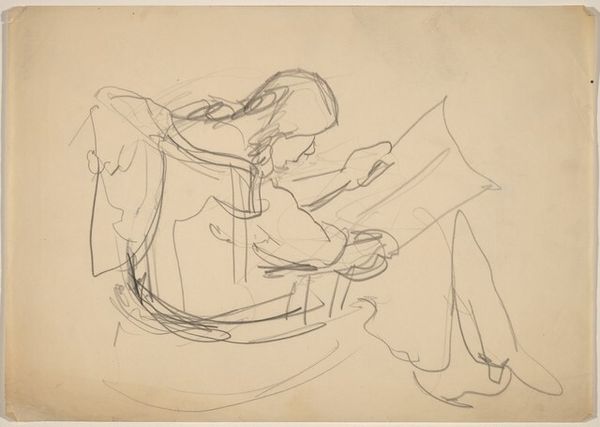![Seated Woman with Crossed Legs [recto] by Mark Rothko](/_next/image?url=https%3A%2F%2Fd2w8kbdekdi1gv.cloudfront.net%2FeyJidWNrZXQiOiAiYXJ0ZXJhLWltYWdlcy1idWNrZXQiLCAia2V5IjogImFydHdvcmtzLzkyNDZmMjFiLTY3OGMtNDg0YS04NDIyLTE5MjQxODA5MTZkNi85MjQ2ZjIxYi02NzhjLTQ4NGEtODQyMi0xOTI0MTgwOTE2ZDZfZnVsbC5qcGciLCAiZWRpdHMiOiB7InJlc2l6ZSI6IHsid2lkdGgiOiAxOTIwLCAiaGVpZ2h0IjogMTkyMCwgImZpdCI6ICJpbnNpZGUifX19&w=1080&q=75)
drawing, pencil
#
portrait
#
drawing
#
pencil sketch
#
figuration
#
pencil
#
academic-art
Copyright: National Gallery of Art: CC0 1.0
Curator: This is a pencil drawing by Mark Rothko, known as "Seated Woman with Crossed Legs." It’s an early work, a study in form far removed from his signature abstract style, seemingly before his world exploded with color. Editor: Well, it certainly feels like a sketch. It has an almost frantic energy in its lines. She's leaning forward, elbows up like she is just about to argue a point. Curator: Right, it's interesting seeing Rothko working representationally, before he fully committed to abstraction. What strikes me is how much emphasis is given to her arms, their muscularity, a bit surprising considering his later, more ethereal concerns. Editor: Absolutely! Those powerful arms are the focal point; it gives her a sense of agency. It feels charged and defiant, somehow, even in its unfinished state. Do you get a sense of place from this? I imagine it would be very telling if it was an open drawing, suggesting it may have been done in a more public setting, reflecting an engagement with the political dimensions of figurative representation. Curator: Perhaps. Rothko wasn’t always keen on making literal associations with his work and more overt social commentary was largely abandoned as his style shifted, I would venture that it could just as likely have been done in the peace and quiet of the domestic space. Though, considering the social realism trending at the time... the piece prompts questions. Editor: And those arms! I wonder if that physicality also pushes against certain stereotypical depictions of women from that time. Was Rothko self-aware enough about these to deliberately play with expectations or overturn gender norms of art in the public sphere at that time? I have no idea! Curator: It’s speculation of course, and perhaps a tad bit reductive, but its exciting to observe possible sociopolitical undertones where possible in his production, to understand art as an act of political intervention rather than an aloof intellectual exercise! Editor: So even within a few seemingly rushed pencil strokes we can divine narratives, hints, perhaps even aspirations from the artist and beyond. Rothko might've moved away from the figure, but it’s fascinating to see that restless exploration in these early pieces.
Comments
No comments
Be the first to comment and join the conversation on the ultimate creative platform.
